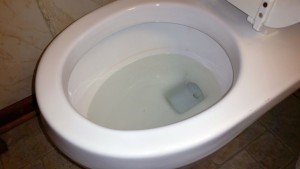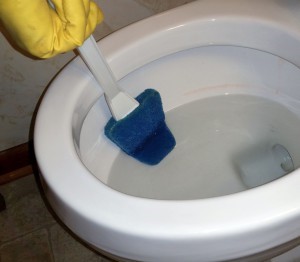To serve you better, we've assembled a list of our customers' most frequently asked questions. If you don't find your answer here, feel free to contact us at 972-932-3077 or at customerservice@rhsud.com.
What can I do when temperatures are consistently at or below freezing?
- If you have pipes that are vulnerable to freezing, turn water off at the source and empty the pipes of residual water.
- Open cabinet doors to expose pipes to warmer room temperatures to help keep them from freezing.
What do I do if my pipes freeze?
- Shut off the water immediately. Don't attempt to thaw frozen pipes unless the water is shut off. Freezing can often cause unseen cracks in pipes or joints.
- Apply heat to the frozen pipe by warming the air around it, or by applying heat directly to a pipe. You can use a hair dryer, space heater or hot water. Be sure not to leave space heaters unattended, and avoid the use of kerosene heaters or open flames.
- Once the pipes have thawed, turn the water back on slowly and check for cracks and leaks.
How could I have used this much water?
You could possibly have a leaky toilet, faucet or irrigation system that's difficult to detect. Just call the office and we'll work with you to solve the problem.
What do I do if I am experiencing low pressure?
Check your meter and the surrounding area for possible leaks. Next, call our office and report low pressure for your area.
Why is my water discolored?
A repair could have been completed recently allowing air to enter the line, causing the milky look.
What chemicals does our utility district add to the water?
Only chemicals that are approved by the Texas Commission on Environmental Quality (TCEQ), Environmental Protection Agency (EPA) and National Safety Foundation (NSF) for treatment of drinking water.
My water tastes, looks, and smells funny. Is it safe to drink?
All public water systems are required to maintain a minimum chlorine level of 0.2 mg/L (tested at the end of each line) by state law. Systems that use chloramine as a disinfectant must maintain a level of 0.5 mg/L by state law. Our disinfectant levels are tested daily to ensure safety.
Why does debris come out of the faucet when running hot water?
Most likely your water heater needs to be flushed. CAUTION: Most manufacturers recommend hiring a professional to flush your water heater. If you plan on doing this yourself, read the owner's manual to keep from being hurt and or damaging the water heater.
Why do I have a previous balance when I know I sent in my payment?
We may have received it after the due date or we may not have received it at all. Call our office and we will help you solve the problem.
Why do I have pink stains in my toilet bowl?
The bacteria Serratia marcescens causes pink stains. Click on image for better view.
Each year, a few customers call to ask us about pink stains or residues that occasionally develop in moist areas in their homes. They generally observe this in toilet bowls, around sink and tub drains, on shower curtains or other shower surfaces, and even in pet water dishes. The customer naturally wants to know if there is something wrong with his/her water.
The answer is no, a pink residue is not a problem with your water quality, and is not harmful in this situation. It is evidence of bacteria that are common inhabitants of our environment. The most typical of these bacteria is one known as Serratia marcescens.
These bacteria come from any of a number of naturally-occurring sources, such as soil, mulch, dust, and surface waters, and they thrive in an environment that is moist and high in phosphates. More people indicate the problem occurs in the summer months when temperatures and humidity are higher, and especially if windows are kept open for any length of time.
Serratia will not survive in chlorinated drinking water. However, where water stands long enough for the residual chlorine disinfectant to dissipate, such as a toilet in a guest bathroom, or on a shower curtain, the pink color may develop. Customers who remove the chlorine from their water by use of an activated carbon filter may also be more likely to experience the problem.
How Can I Get Rid of the Stains?
Once established, Serratia is difficult to eliminate entirely. However, regular and thorough cleaning, followed by disinfection with chlorine bleach, is the best means to control the organism.
- Wipe bathtubs, shower walls and curtains, and around drains in order to dry them, followed by spraying or misting with a product that contains bleach or other disinfectant.
- For toilets, clean the bowl regularly. You may wish to add ¼ cup of bleach to the toilet tank, let stand for 15-20 minutes, and then flush the bowl a couple of times to fully rinse the disinfectant. Bleach should not be left in the toilet tank for prolonged periods, however, as it will damage the rubber seals and valves inside.
- Use care with any abrasives to avoid scratching a fixture or surface, which will raise the likelihood of bacterial growth.
- Clean pet water bowls in a similar manner. Leave a bleach solution in the bowl for 5-10 minutes, followed by thorough rinsing.
For toilets and showers clean off the pink residue, and then mist with a product that contains chlorine bleach. Click on image for better view.



